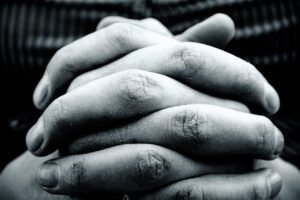
Embarking on the journey of unlocking the profound power of answered prayers has led us to a crucial connection:
“Faith: The Unseen Force”
Jesus said to His disciples, “All things for which you pray and ask, believe that you have received them and they will be granted you (Mark 11:24).”
Examine the message conveyed by this verse and take note of its nuances:
“Those who believe they have received – already have received.”
However, it is common for us to phrase it differently:
“Those who believe they will receive – shall obtain it.”
Watchman Nee articulates the existence of two distinct types of faith:
the faith in having already received
and
the faith in the anticipation of receiving.

The difference between these two perspectives is substantial, akin to the contrast between night and day.
Seeking through prayer, questioning, and maintaining belief all demand the presence of faith.
However, what exactly constitutes faith?

Faith, as outlined in the Blue Letter Bible, can be equated with trust or belief. It embodies the deep conviction in the truth of a matter, particularly in the context of one’s relationship with God.
 In Scripture, faith is characterized by a profound belief accompanied by trust and a sacred passion. It also imparts the qualities of reliability and steadfastness to the individual who possesses it.
In Scripture, faith is characterized by a profound belief accompanied by trust and a sacred passion. It also imparts the qualities of reliability and steadfastness to the individual who possesses it.
 Faith is like a flower opening up in the sunshine. It’s like when the petals of a flower unfold and show the inside. Just as the sun helps the flower grow and be colorful, faith lets us grow and be our true selves. Think of it as the starting point for everything else, like how the spark of sunlight brings life and beauty to the flower. (Alexander Maclaren)
Faith is like a flower opening up in the sunshine. It’s like when the petals of a flower unfold and show the inside. Just as the sun helps the flower grow and be colorful, faith lets us grow and be our true selves. Think of it as the starting point for everything else, like how the spark of sunlight brings life and beauty to the flower. (Alexander Maclaren)
In its diverse expressions, faith is like holding onto something vital, even though you cannot see it. It involves entering into a covenant with God confidently, anticipating that He will respond to prayers, even in the face of delays and outcomes not aligning with personal desires.

 It is an unconditional reliance on God’s character.
It is an unconditional reliance on God’s character.
The term implies both knowledge and action. One may receive knowledge of a certain truth and may even offer verbal agreement, but “trust” or “confidence” is not said to be present until one’s behavior reflects that truth. (Charles Swindoll)

George Mueller states that if you start worrying too much, it means your faith might be slipping away.
 Genuine faith is sticking to your beliefs, no matter what happens, and it provides a solid foundation for your spiritual journey. It is a powerful force that helps you understand, endure, and trust, shaping what you believe in.
Genuine faith is sticking to your beliefs, no matter what happens, and it provides a solid foundation for your spiritual journey. It is a powerful force that helps you understand, endure, and trust, shaping what you believe in.
A.W. Tozer defines faith as a state of maintained confidence (boldness, assurance) in God. Faith and patience are partners. Give faith time to work! My prayer has to be based upon my faith in God, and that faith is based upon my confidence in Him and who He says He is.
faith time to work! My prayer has to be based upon my faith in God, and that faith is based upon my confidence in Him and who He says He is.
In this intricate tapestry of definitions, faith emerges as the dynamic force that unfolds, grasps, endures, and trusts—an essential element that not only shapes our beliefs but also defines our spiritual journey.
Faith is not the destination; it is the journey.
In the parallel passage, Matthew 21:20-22, Jesus responds to the disciples’ question: “How did the fig tree wither all at once? Truly I say to you, if you have faith and do not doubt, you will not only do what was done to the fig tree, but even if you say to this mountain, ‘Be taken up and cast into the sea,’ it will happen. And all things you ask in prayer, believing, you will receive.”
It is noteworthy that those questioning Jesus about the cursed fig tree do not seek an explanation from Him.
Rather than providing a detailed clarification, Jesus redirects their attention from the lifeless fig tree to the living God.
He underscores the crucial importance of placing faith not in an abstract concept or blind belief but in the dynamic and omnipotent God whose power they have witnessed. 
The critical takeaway lies in understanding that genuine faith extends beyond mere confidence in “faith” itself or in vague principles—it is rooted in a personal and living connection with God.
The quality of faith hinges on the reliability and steadfastness of its object, and in this context, it is the unwavering and faithful nature of God.
Faith is that unseen force weaving its way through the tapestry of our lives, offering comfort in uncertainty and hope in the face of adversity.
offering comfort in uncertainty and hope in the face of adversity.
It is the quiet strength that steadies us when the road is rocky and the light that illuminates our darkest hours.

Take a moment to gaze back at the winding road of your life. Reflect on the moments that stand as testaments to faith—the highs and lows. Ponder those instances when faith was not just a concept but a tangible presence guiding you, shaping your decisions, offering comfort in times of distress, and weaving a tapestry of meaning into the seemingly random events of your life.
on the moments that stand as testaments to faith—the highs and lows. Ponder those instances when faith was not just a concept but a tangible presence guiding you, shaping your decisions, offering comfort in times of distress, and weaving a tapestry of meaning into the seemingly random events of your life.
What lessons have you gleaned from the interplay of faith and circumstance? How has it shaped your perspective, relationships, and choices?
In the upcoming Part Two of “Faith, the Unseen Force,” we’ll delve even deeper into the multifaceted nature of faith. We’ll explore how it manifests in the intricate tapestry of your personal journey and discover the profound impact it continues to have on the chapters yet to unfold.
So, until then, keep reflecting, keep believing, and stay tuned for the next chapter in our exploration of faith.  Your journey is a story still in the making,
Your journey is a story still in the making,
and faith is the thread  that binds it all together.
that binds it all together.
Until next time, may your path be filled with the unwavering presence of the unseen force that guides us all.

